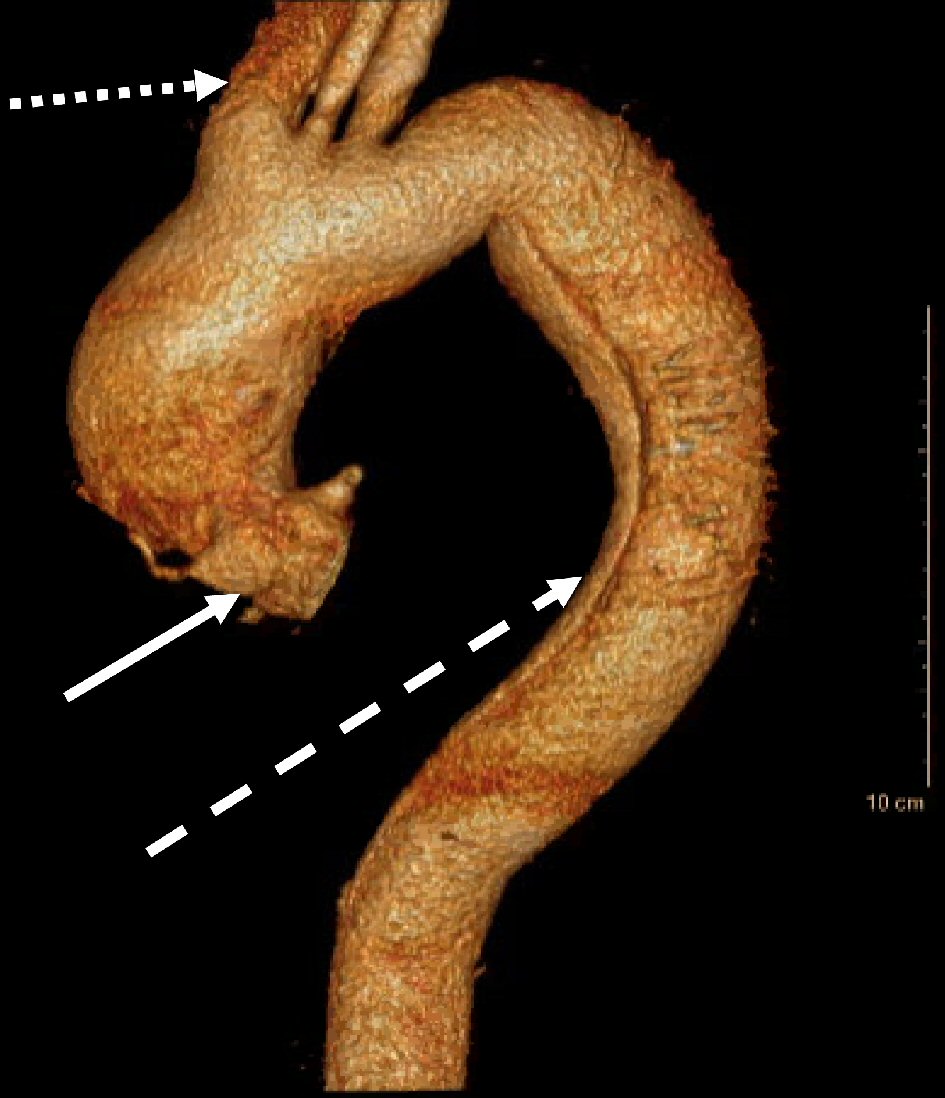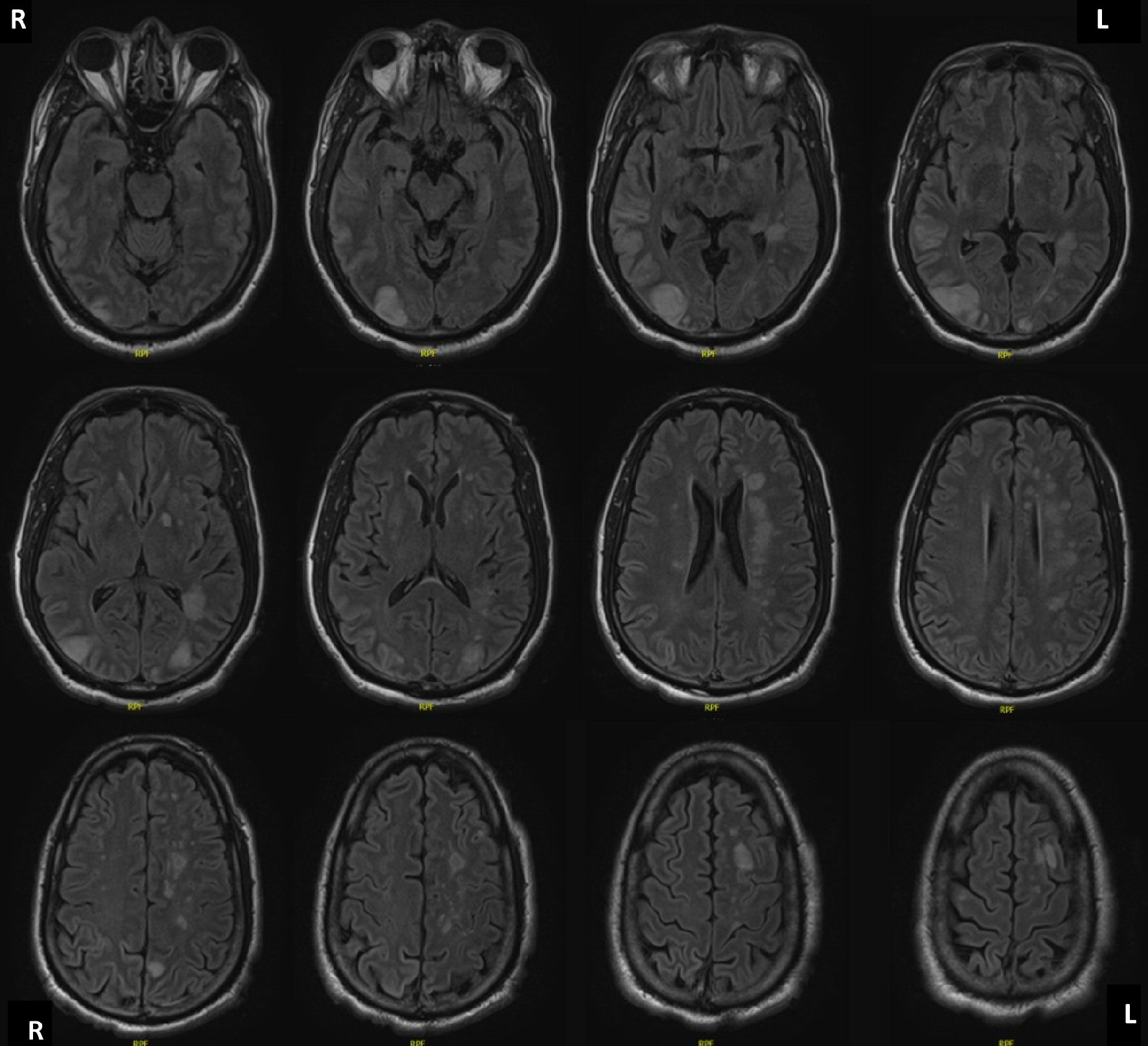
Figure 1. CT angiogram thoracic aorta three-dimensional (3D) reconstruction demonstrating Stanford type A AAD at the aortic root (solid white arrow), with extension into the innominate artery (dotted white arrow) and distal extension to the descending thoracic aorta (dashed white arrow). CT: computed tomography.

Figure 2. MRI brain without contrast, axial T2 weighted imaging, demonstrating diffuse regions of increased relaxation time in the left periventricular white matter, left frontal, right temporal, left cerebellar hemisphere, left parietal, and bilateral occipital lobes, and left hypothalamus, consistent with global watershed ischemia and infarction territories. MRI: magnetic resonance imaging.

